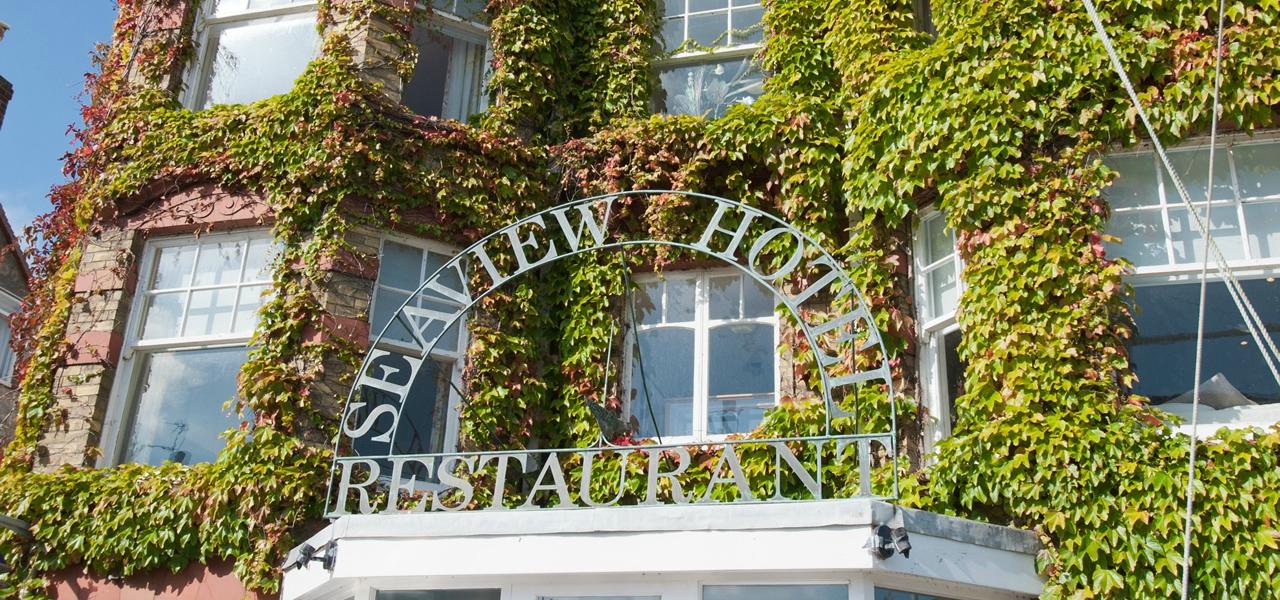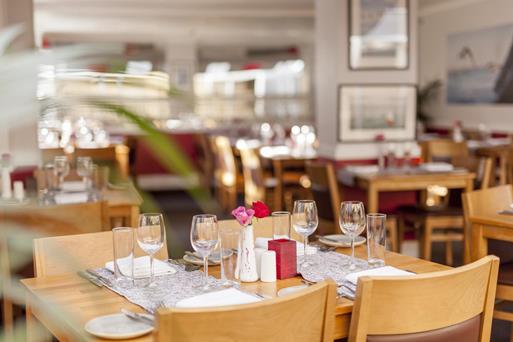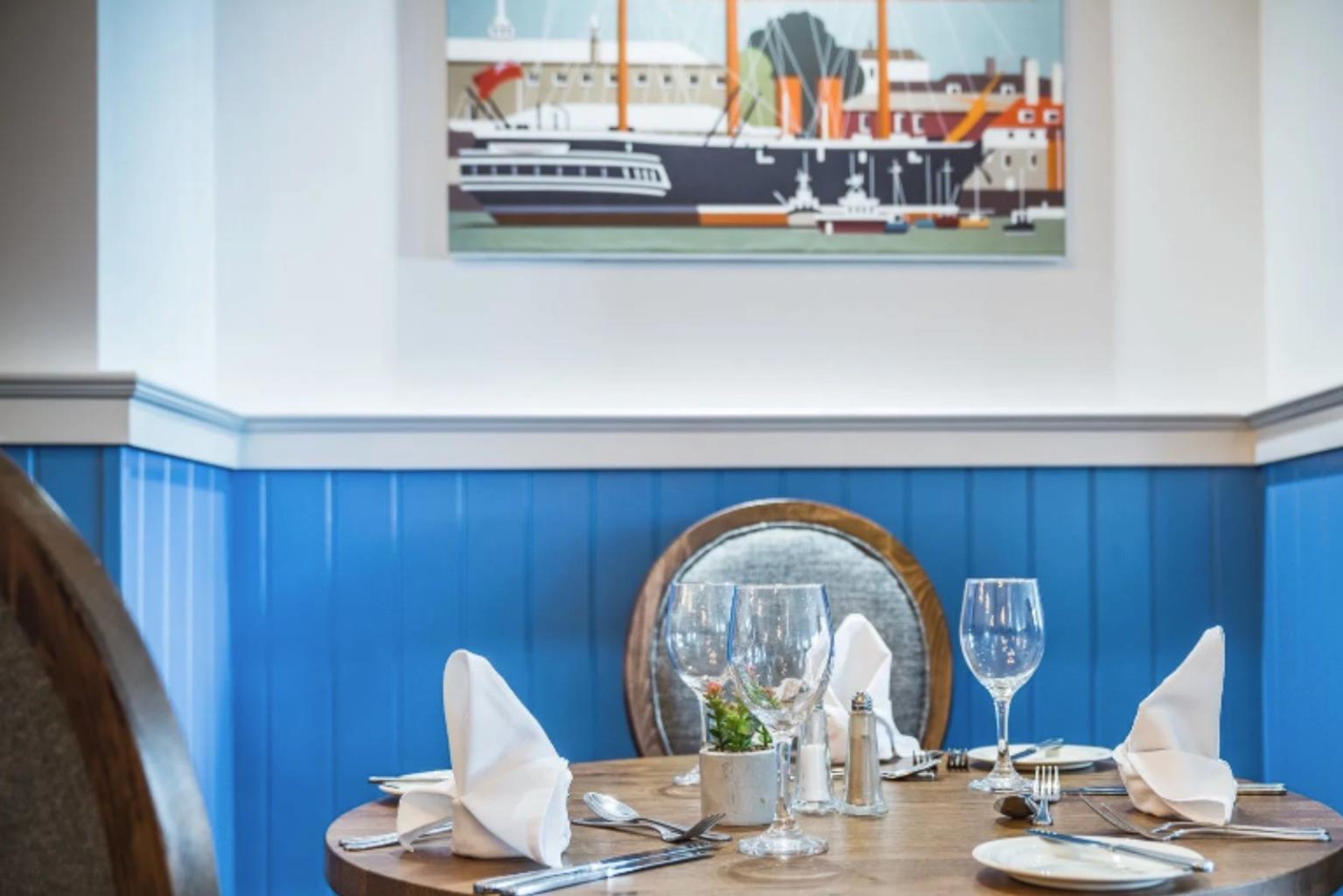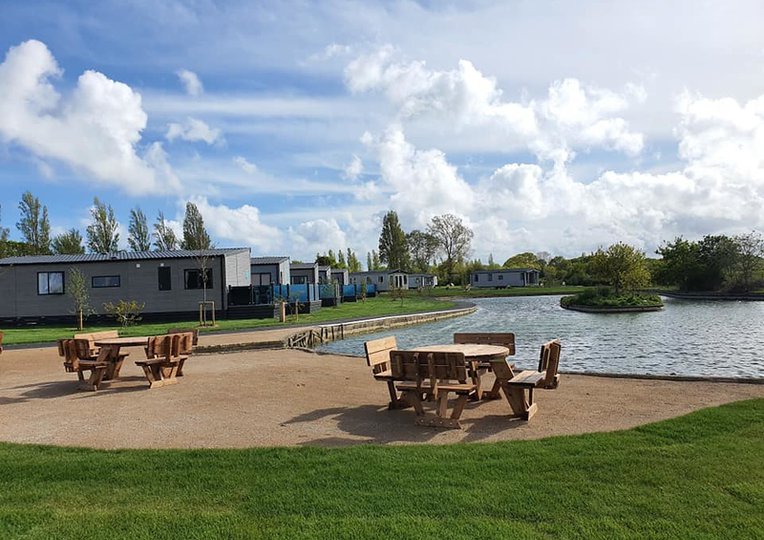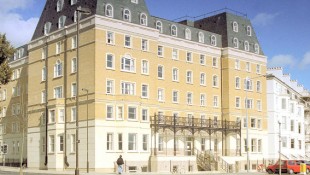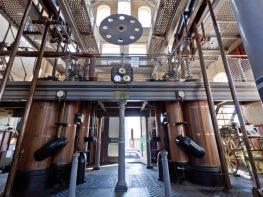The Royal Maritime Club is one of the oldest hotels in Portsmouth. On offer are comfortable…
Farlington Marshes

Birds and bombs make a colourful backdrop to this bracing walk in Langstone Harbour.
2.5 miles (4kms)
About the walk
Farlington Marshes, just across the Broom Channel from Portsea Island and the teeming city centre, are right in Portsmouth’s back garden. Cut off from the north by the busy A27 and surrounded on three sides by Langstone Harbour, this peaceful wildlife reserve has been managed by the Hampshire and Isle of Wight Wildlife Trust since 1962.
Today these low-lying fields are internationally important for wildlife. The grassland areas are bright with butterflies and summer wild flowers, which include rarities such as sea barley, bulbous foxtail and slender hare’s-ear. Summer is also the time to see breeding lapwing and skylark, while in winter the fields offer grazing and shelter to thousands of brent geese. Other birds to look out for in and around the lagoons and reedbeds include bearded tits, wigeon, teal and black-tailed godwits.
But the site also has a fascinating history. The marshes as you’ll see them now were created in the late 18th century, when the Lord of the Manor of Farlington reclaimed them from Langstone Harbour by linking some of the islands with a clay and timber wall. From that time, the marshes have provided rich grazing meadows and cattle were once raised here.
Wartime deception
This pastoral idyll was rudely disturbed during World War II, when the War Department established an anti-aircraft battery on the site. The marshes were also used as a decoy to draw enemy bombers away from Portsmouth after a heavy raid in January 1941. Fires were lit in specially constructed bunkers, tricking the German pilots into bombing the still waters of Langstone Harbour instead of the blacked-out city centre. Look out for a couple of wartime brick structures as you walk around the harbour wall, as well as some small, round ponds formed in old bomb craters further inland. Another wartime casualty was the oyster watchman’s house, built in 1819 on the tiny island that you’ll see just across the water as the harbour wall turns north. The house, which belonged to a Matthew Russell, has never been rebuilt, but Russell’s Lake still runs south from the island he once called home.
Walk directions
Leave the car park through the kissing gate beside the Wildlife Trust’s notice boards and walk down the slope to the information board. Turn right through a kissing gate and onto the harbour wall. The winding coastal path offers exceptional views across Langstone Harbour and turns hard left after almost 1 mile (1.6km).
The scenery changes as you head north, with views to the red-brick Victorian forts along the top of Portsdown Hill. Continue walking past a viewing area and an information panel, followed by an old wartime bunker, then keep an eye out for the low bulk of North Binness Island drawing closer on your right.
Turn left, off the harbour wall just after two gateposts, missing the gate and dropping down to pass through a similar pair of gateposts a few paces further on. Follow the gravel track and after 275yds (251m) turn left at the junction and pass the Wildlife Trust’s whitewashed storage building. Continue walking to reach a kissing gate some 100yds (91m) further on.
Turn left through the gate and follow the waymarked grassy path (via short white posts on the left of the path) into the heart of the reserve, with reedbeds and an open wetland area on your left. Cross the plank bridge and continue ahead for 200yds (183m), keeping a sizeable lake to your left.
Continue on the marked path along a fence on the left to a gate. Pass through a kissing gate and climb the bank, turn right and at a fork in the path bear right, away from the harbour wall and through a kissing gate and rejoin the outward route at the information board just before the car park.
Additional information
Mostly gravel tracks but the final grassy section can be muddy, particularly in winter
Grazing marsh, wetlands and harbour wall
On lead at all times
OS Explorer OL8 Chichester
Coastal car park by A27 (may be very busy at weekends)
None on route
The harbour wall is very exposed and it can be surprisingly cold at any time of year, so do check the forecast and bring some warm clothing with you.
WALKING IN SAFETY
Read our tips to look after yourself and the environment when following this walk.
Find out more
Also in the area
About the area
Discover Hampshire
Hampshire’s varied landscape of hills and heaths, downlands and forests, valleys and coast is without rival in southern England. Combine these varied landscapes and terrains with secluded and idyllic villages, complete with thatched and timber-framed cottages and Norman churches, elegant Georgian market towns, historic ports and cities, restored canals and ancient abbeys, forts and castles, and you have a county that is paradise for lovers of the great outdoors.
If you’re a walker, stride out across the high, rolling, chalk downland of the north Hampshire ‘highlands’ with far-reaching views, walk through steep, beech-clad ‘hangers’ close to the Sussex border. Or perhaps take a gentler stroll and meander along peaceful paths through unspoilt river valleys, etched by the sparkling trout streams of the Test, Itchen, Avon and Meon. Alternatively, wander across lonely salt marshes and beside fascinating coastal inlets or, perhaps, explore the beautiful medieval forest and heathland of the New Forest, the jewel in Hampshire’s crown.
Nearby stays
Restaurants and Pubs
Nearby experiences
Recommended things to do
Why choose Rated Trips?
Your trusted guide to rated places across the UK
The best coverage
Discover more than 15,000 professionally rated places to stay, eat and visit from across the UK and Ireland.
Quality assured
Choose a place to stay safe in the knowledge that it has been expertly assessed by trained assessors.
Plan your next trip
Search by location or the type of place you're visiting to find your next ideal holiday experience.
Travel inspiration
Read our articles, city guides and recommended things to do for inspiration. We're here to help you explore the UK.




